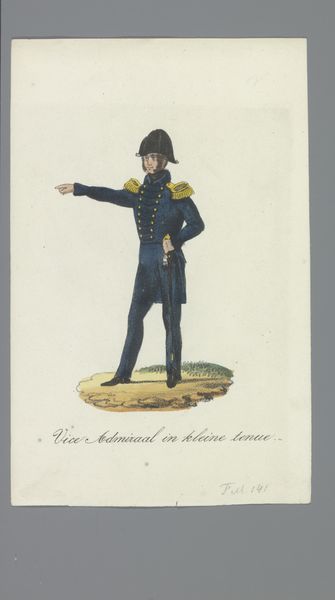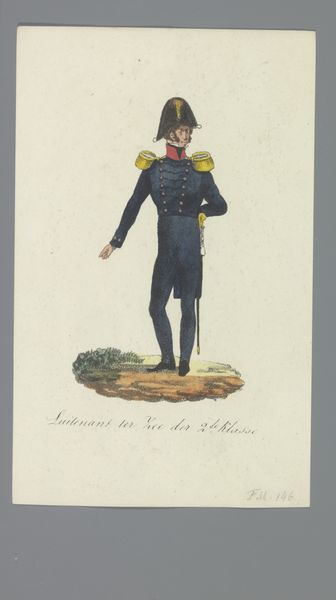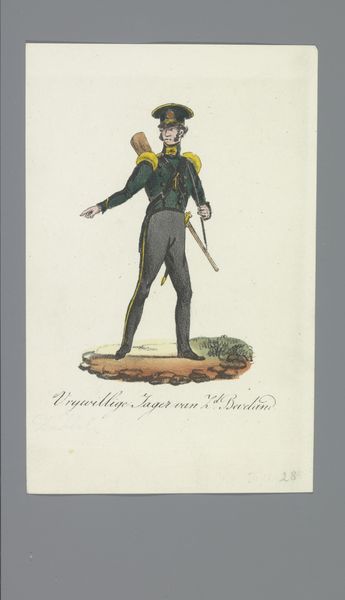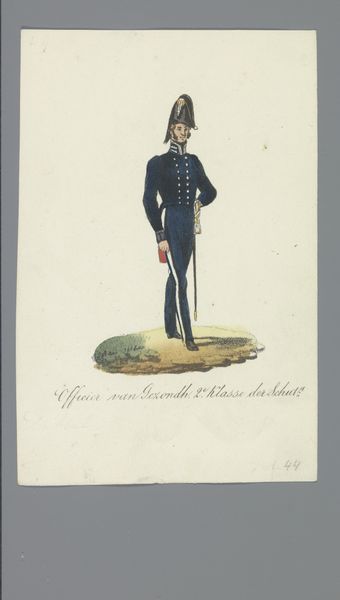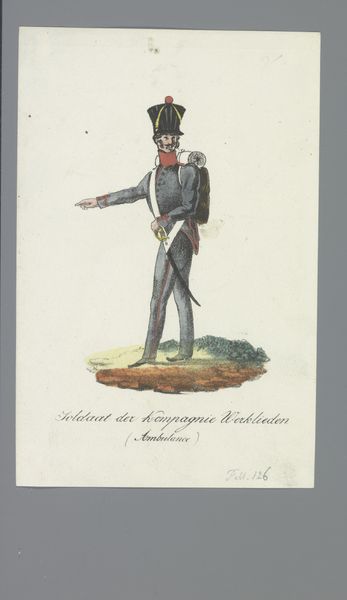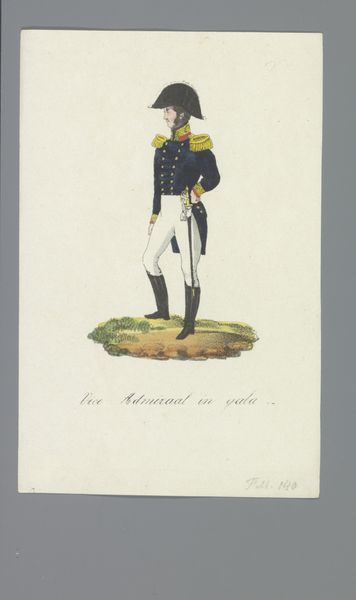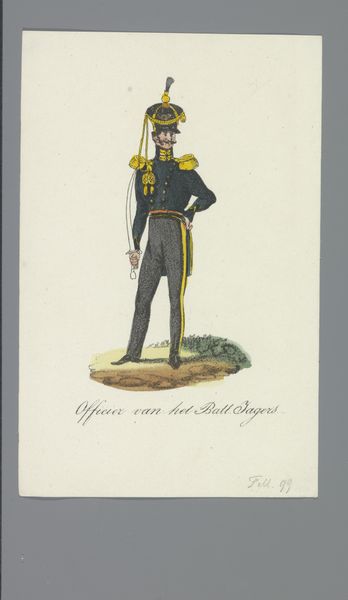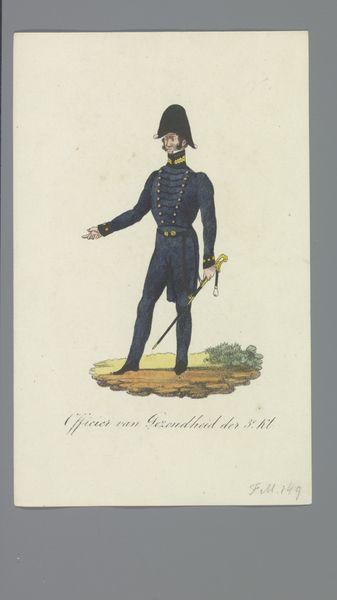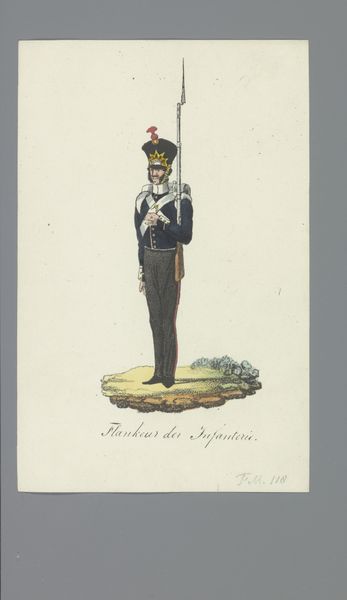
watercolor
#
portrait
#
watercolor
#
romanticism
#
costume
#
watercolour bleed
#
watercolour illustration
Dimensions: height 170 mm, width 110 mm
Copyright: Rijks Museum: Open Domain
Editor: This is "Kapitein ter Zee in groote tenue," created sometime between 1835 and 1850 by Albertus Verhoesen, currently at the Rijksmuseum. It’s a delicate watercolor piece, quite detailed for its size. The captain’s uniform really stands out. What’s your take on it? Curator: As a materialist, I’m drawn to the tangible elements. Look at the watercolor itself – how the artist manipulates the medium to depict not just the *image* of the uniform, but also, essentially, the *materials* it's made from: the wool of the coat, the metallic gleam of the epaulettes, the fine braid. This tells us about the material culture of the navy at that time – the procurement, labor, and the overall system that produced that very specific aesthetic. What sort of cultural power is literally invested in those fibres? Editor: So you see the artistic merit not just in the depiction but also in the material reality of the subject. Curator: Precisely. And consider how Verhoesen, likely trained in conventional artistic methods, deployed them in depicting a commissioned portrait within that cultural and material system. Think of this painting as part of a process; from dye production, uniform creation and wear, through the labor needed for the image, to its consumption. Were watercolors a democratic medium accessible to most artists, or did cost act as a selection pressure for certain class biases? Editor: That really shifts my focus from the individual portrait to its role in a larger economic and social network. The watercolor is part of the culture, not separate from it. Curator: Exactly. It brings labor and consumption into focus, challenging art/craft distinctions. Editor: Thanks, that approach makes the artwork seem embedded in history rather than simply reflecting it. Curator: My pleasure! Looking through the lens of materials opens so many avenues of enquiry.
Comments
No comments
Be the first to comment and join the conversation on the ultimate creative platform.


